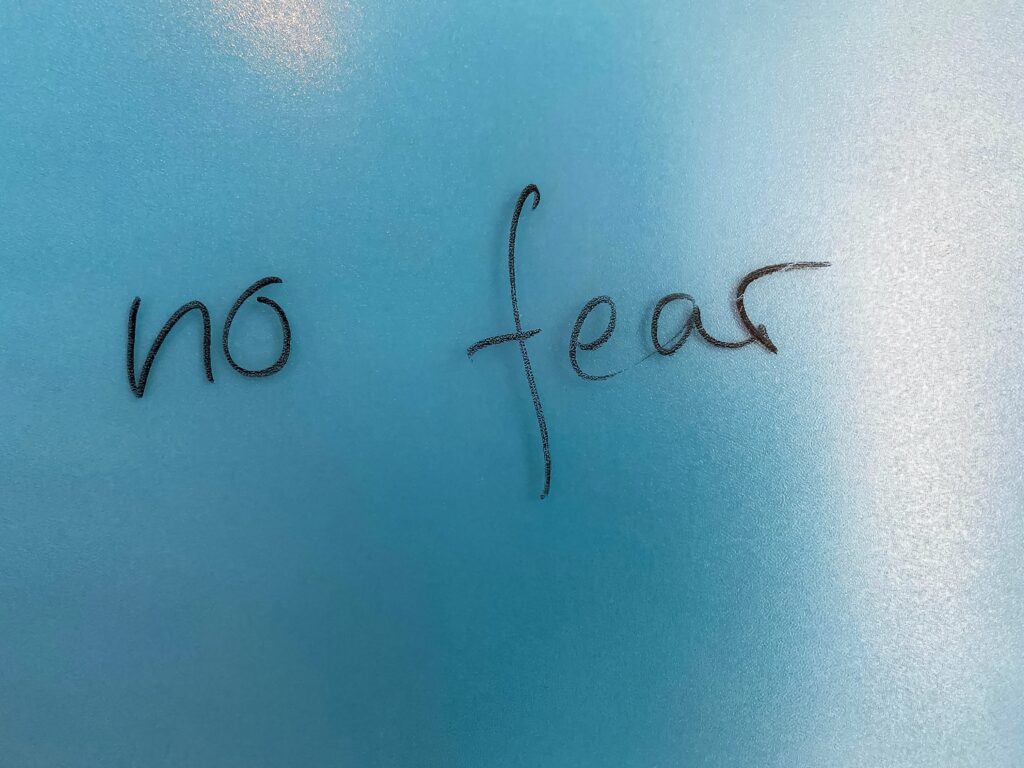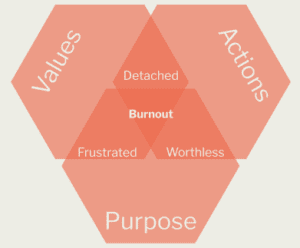
Effective Communication for Successful Leadership
1. Effective Leadership Communication.
Effective communication is fundamental to the success of any organisation. Understanding its importance and the consequences of poor communication is crucial for developing a strong foundation on which you can build success.
Have you ever found yourself frustrated with a colleague for failing to meet your expectations? How often does this frustration stem from miscommunication or misunderstandings? Perhaps they assumed certain things or overlooked finer details. In these situations, we might wonder, “What should I do about it?”
Interestingly, effective communication hinges not only on the receiver but also, primarily, on the communicator. Understanding the critical importance of effective communication and the dire consequences of its absence is crucial for building a solid foundation on which you can build an effective and productive team.

2. Why Is Effective Communication Important?
Understanding the financial implications of poor communication emphasises the urgency of investing in effective communication strategies. Poor communication can impede teams from navigating through challenging circumstances, resulting in negative outcomes, negatively impacting the bottom line.
Effective communication is foundational to any organisation’s success. Our ability to collaborate effectively hinges on our capacity to communicate properly. No matter how intelligent individuals are, collective intelligence remains at zero if effective collaboration is lacking.
In the Economist Intelligence Unit Survey of US company leaders, respondents say communication barriers are leading to amongst other things, a delay or failure to complete projects (44%), low morale (31%), missed performance goals (25%), lost innovation (20%) and even lost sales (18%). Tight deadlines, without effective communication, quickly become sources of tension, exacerbating breakdowns in communication.
Frustrations arising from poor communication not only impact morale but also hinder creative innovation and problem-solving. In business-to-business sales, ineffective communication with clients or among team members can leave prospects feeling unheard and undervalued, gifting valuable opportunities to competitors. Surveys indicate that a significant percentage of companies estimate substantial revenue losses due to communication breakdowns.
According to a survey, 30% of respondents estimate losing $100k (c.£80k) or more in annual sales due to communication breakdowns. The estimated average cost of poor communication for US and UK companies is a staggering $62.4m (c.£49.5m) per year. During the pandemic businesses rapidly increased their adoption of digital communication channels with tools like Zoom, Slack and internal communication infrastructure. On average, digital offerings have leapfrogged seven years of progress in a matter of months (MicKinsey & Company). Despite our always on, always ready to respond culture, communication challenges persist.

3. What Poor Communication Looks And Sounds Like.
Identifying signs of poor communication is essential for addressing and improving communication effectiveness within the organisation. Using brief message content and the wrong communication channel creates a disconnect that can impede productivity and teamwork.
Picture this: You are delegating a critical task to a team member or colleague. You’ve got a clear idea in your head, but when it comes time to convey it, you opt for a quick email or text, assuming they’ll grasp the essence of the message, and its importance. However, upon receiving your message, they interpret it differently, resulting in confusion and delays. Simply naming the task to be done and assigning it to someone on Slack is like asking someone to review a movie based on the poster – it will not be effective.
Interestingly, the majority of people – 49% – rank verbal communication as their preferred means of communication, while email is actually the most used communication tool, despite emails not being regarded as the most effective method. People also regard video conferences, presentation decks, white boards, and sketch pads highly.
Middle-management is hit hardest by communication breakdowns compared to C-suite and non-managerial employees. Consider the plight of middle managers tasked with translating high-level strategies into actionable plans – likely exacerbated by conveying information backwards and forwards between levels which have inherently different communications styles and/or approaches.
Even though middle-managers are the ones that have the deepest empathy for both sides of the hierarchy, and likely to have the strongest insight, communication consumes great effort. If strategic goals from upper management and/or the C-suite are conveyed vaguely, lacking detailed instructions, then without considerable work, as these directives trickle down through the organisational hierarchy, crucial information becomes lost in translation.
If the inspiring strategic vision doesn’t connect with the middle-managers then frontline employees, devoid of clear guidance and meaning, will struggle to align their actions with overarching objectives.
Conversely, if feedback and insights from frontline employees fails to reach or resonate with decision-makers, disjointed strategies and operational inefficiencies will be the result.
- In both instances, up and down the hierarchy, the absence of effective communication across organisational levels compounds the challenges faced by individuals striving to execute tasks and achieve organisational objectives.

4. Why Do Breakdowns In Communication Occur?
The Economist Intelligence Unit Survey of US company leaders shows that the key reason for breakdown in communication is different communications styles, with 42% of respondents stating this, which is rooted in modes of communication and intergenerational differences. This was followed by unclear responsibilities (34%), time pressures (31%), a lack of strong leadership (29%), personal differences among colleagues (27%), corporate culture (23%), client demands (23%), ineffective tools and/or techniques (15%), and financial pressures (12%). Interestingly, only 9% put breakdowns in communication down to the use of jargon.
Different communication styles and ineffective use of communication tools are contributing to the lack of clarity about responsibilities that is evident in the research, and certainly adding to workplace stress levels. In fact, the survey shows that unclear instructions from a senior colleague or manager is the most frequently cited stressful situation at work (reported by 61%).
The mode of communication impacts on effectiveness too. Instant messaging and social media is preferred by millennials (used every day by 37%) compared to baby boomers (used every day by 12%) who prefer to pick up the phone; 65% of respondents say that face-to-face meetings are most effective but only 22% say they have these every day. This could be a problem for increasingly remote teams, as 27% of those who worked remotely said this made communication with colleagues either very or somewhat difficult.
5. What Is Effective Communication?
Great communication begins with empathy and understanding for individuals in the business world. Inclusive leaders prioritise audience-centric communication, ensuring messages resonate authentically.
By embracing diverse perspectives equitably, organisations foster innovation and resilience. As we navigate the complexities of the modern business landscape, effective communication remains paramount. It is the cornerstone upon which successful organisations build their futures.
The Osgood-Schramm Model (1954)
The Osgood-Schramm Model of communication suggests some clear stages to work through in order to ensure communication is effective, with a cyclical rather than linear trajectory:
- The sender has an idea that they form and encode into a message, which they send via a channel ranging from verbal communication to an email, for the receiver to decode and interpret.
- The receiver decodes the received message, then takes their interpretation and encodes that into a feedback message, which the original sender must receive, decode, and interpret before they compare the response received with what they originally sent.
- If there’s a match, then there is a mutual understanding, and effective communication has taken place.
However, the number of places where communication can break down is vast:
- Is the message encoded suitably for the recipient?
- Is the chosen communication channel appropriate for the message?
- Is there noise causing confusion and disrupting communication?
Great communication isn’t about getting it right the first time; it’s about ensuring a strong feedback loop between the receiver and the sender to enable both parties to feel confident that what was said is what was heard. A useful way to remember this is with a presupposition of neuro-linguistic programming (NLP), which states that the meaning of the communication is the response that you get; it’s not what you say, but the feedback you receive.
In an organisation, it is essential for leaders to encode their messages in a way that the audience can relate to them. Ask yourself not what do I want to say, but how do they need to hear it? We need to consider the timing of our communication to minimise the chances of noise interfering with the clarity of our message, and we need to make sure that the invitation is given and appropriate time is made to receive feedback and verify that the communication has taken place effectively. Of course, this means that the sender becomes the receiver, and as leaders, we have to make sure that our team feels heard in their feedback too.

6. Effective Business Communications For Inclusivity.
Inclusive leaders demonstrate audience-centric communication, subject matter expertise, and authenticity. This focus on empathy, active listening, and openness is also useful when considering making our working environments more inclusive.
Asking people how they prefer to be communicated with can be surprisingly revealing, and being curious about other people’s worlds can help you understand some of the noise in that person’s environment, and why some communications don’t seem to be effective.
If people feel they can share without fear of prejudice or isolation from the tribe, they will be far more willing to give effective feedback and ensure a complete communication cycle. But if what they have to say never seems to make a difference, don’t expect them to volunteer insight to make your job easier.
Feedback is, or should be, two-way, yet many leaders struggle with giving feedback as much as they are uncomfortable receiving it. As Kate Neville of Inclusive Leadership Strategies explains:
“Many leaders and managers find delivering constructive feedback to be a challenge, frequently declining opportunities to do so, whether from a desire to spare the person’s feelings, avoid an uncomfortable conversation, preserve their image of themselves as ‘nice,’ or save themselves time by doing a task themselves. This is true even when the potential recipient of the feedback looks just like them.
But it is even more so when D&I comes into play. When there is difference people experience heightened fears of fragility and can reveal the unconscious bias of showing bias of the person giving feedback.
As a result, feedback tends to be given less to minority groups. Women of colour are shown to be less likely to receive mentoring and candid feedback than their white male counterparts.”
Empathy is crucial for effective communication, especially within Diversity, Equity, and Inclusion practice. Our Diversity, Equity, And Inclusion For Successful Leadership White Paper cited the work of Baum (2021) who argues emotional intelligence (the ability to empathise with a way of thinking that may be distant from your own) is key to inclusive leadership; and the work of Ely and Thomas, according to whom inclusivity is key to DE&I – feeling heard, genuinely valued for their differences, and able to contribute meaningfully to the conversation is crucial for fostering a sense of inclusion, and effective communication based on empathy and active listening are key to this.
6.1. Effective Feedback In DE&I Context.
In the context of Diversity, Equity, and Inclusion (D&I), effective feedback is paramount for fostering an inclusive workplace culture. Forbes’ Hanna Hart highlighted key elements of a more inclusive approach to giving feedback, emphasising its constructive nature and specificity to observable behaviors, making it actionable. It stressed the importance of fostering a two-way conversation, whether between manager and employee or employee and manager, peer-to-peer, formal or informal, ensuring both perspectives are heard and valued. Furthermore, feedback should be grounded in a growth mindset rather than blame, encouraging continuous learning and improvement.
To enhance inclusiveness, it’s essential to acknowledge power dynamics, and recognise the heightened risk felt by individuals with less rank or those who are more marginalised. Actively listening to their perspective, dropping assumptions, and being open to honest feedback, even if it triggers discomfort or isn’t delivered in the preferred way, are crucial steps.
Additionally, being aware of personal biases such as prove it again bias (when women and ethnic minorities experience constant scrutiny and the need to repeatedly prove themselves as competent), confirmation bias (the tendency to search for, interpret, favour, and recall information in a way that confirms or supports our prior beliefs or values), and affinity bias (the tendency to favour people who share similar interests, backgrounds, and experiences with us) is vital.
Questioning assumptions and considering the influence of systems and context on an individual’s ability to act on feedback further contributes to inclusivity.
Finally, showing appreciation is key to fostering a positive and supportive environment for growth and development, as high-performance teams demonstrate with a 5 : 1 ratio of praise : criticism.

7. What You Can Do To Improve Your Communications.
Signposting your communication is a powerful technique for helping people understand the kind of message they are about to receive.
Phrases like “I would like to give you some feedback,” “I’d like to share with you some observations,” “I’d like to tell you about something that happened that I thought was really great,” “I’d like to summarise what I’ve heard,” or “can I ask you a few questions so that I can understand better what you are trying to tell me?” can help reduce the noise around your communication and prepare the receiver to tune-in to the message and decode it with clarity and confidence.
7.1. Seven Tips For Effective Leadership Communications.
- 1. Adapt Your Communication Style: Recognise that different people have different communication preferences and styles. Adapt your approach based on the individual you are communicating with. For example, some may prefer direct and concise communication, while others may appreciate a more detailed and nuanced explanation.
- 2. Practice Active Listening: Truly listen to what others are saying without interrupting or formulating your response in your mind. Pay attention to their words but also to their tone of voice, body language, and emotions. Reflect back what you hear to ensure understanding and show that you value their perspective.
- 3. Prioritise Transparency: Be honest and forthcoming in your communication. Avoid withholding important information or sugarcoating the truth. Transparency builds trust and fosters open communication within teams and organisations.
- 4. Strive for Clarity: Express your ideas and messages clearly and concisely. Avoid jargon or overly complex language that may confuse or alienate your audience. Use concrete examples and visuals when necessary to illustrate your points effectively.
- 5. Cultivate Empathy: Put yourself in the shoes of others and try to understand their perspectives, feelings, and needs. Empathy allows you to connect with others on a deeper level and fosters mutual respect and understanding in communication.
- 6. Mind Your Body Language: Your nonverbal cues, such as facial expressions, gestures, and posture, can significantly impact how your message is received. Maintain open and welcoming body language to convey approachability and receptiveness. Avoid crossing your arms or appearing tense, as this can signal defensiveness or disinterest.
- 7. Seek and Implement Feedback: Actively solicit feedback from colleagues, supervisors, and team members about your communication style and effectiveness. Be open to constructive criticism and use it as an opportunity for growth and improvement. Implementing feedback demonstrates your commitment to continuous learning and development in communication skills.

8. What You Can Do To Improve Other People’s Communications.
Supporting and empowering others to improve their communication skills is crucial for fostering a communicative and inclusive, two-way, circular feedback workplace.
8.1. Improving Team Communications In Diverse Teams.
Effective team communication in diverse teams requires understanding and respecting different communication styles and preferences. Inclusive workplace communication fosters a sense of belonging and ensures that all voices are heard. If you wish to foster a better communication culture with your team, it’s important to get some clear principles in place.
Acknowledge that everybody has different preferences for communication and invite people to share those with the group. Remember, it’s not about trying to please everybody, but it is about making allowances where you can when you are looking to communicate with someone
8.2. A Practical Exercise to Improve Team Communications.
This is a simple workshop you can run as an icebreaker in a team meeting:
Ask the team to imagine they are on the last day of a big project, and when they check their messages they see one of the following phrases. What do they think it means, and how might their emotions encourage them to respond?
- Do you have a minute?
- I need to see you right now.
- Fine.
Now ask them to imagine they have just delivered on a big project, and the energy is high in the office, with everyone up-beat and excited. How do they interpret those messages now?
Workshopping these phrases can show how something quite innocent but ill-prepared can lead to misinterpretation and stress on the part of the receiver. It can help your team to see the value in making that extra effort. Make a commitment as a team to invite feedback on all communication, to make sure that what was said is the same as what was heard. This can be done simply, by asking:
- Do you have any questions?
- Is there anything you need from me to complete this task?
- Can we take 5 minutes to make sure that we are on the same page?
If you can agree as a team that the communication hasn’t taken place until you are confident that it has been heard, you can greatly increase the effectiveness of communication in your organisation.
Finally, do not underestimate the influence of a power dynamic on your team. If a leader is perceived as not being open to feedback, they can quickly become unknowingly ineffective as a communicator. Let your team know often that you want to know how you can communicate with them better. Even if you receive feedback that you disagree with, thank them for it and recognise that no matter what your intentions were, this is how you are being perceived.
If you want to know how to improve your communications as a leader, the best people to ask are the people you lead.

9. What A Great Communication Culture Does For Your Organisation.
Cultivating a culture of effective communication can have significant benefits for organisational success. Investing in effective communication strategies can lead to improved employee engagement, morale, productivity, creativity, innovation, and ultimately, organisational success. A positive communication culture can enhance employee satisfaction and retention, and overall organisational performance and output. As human beings, we are flawed, and we are not always going to get it right.
But if you can get a culture in place in your organisation that is committed to constantly improving communication culture through two-way, circular feedback training and continuous improvement, your efforts will be repaid many times over.
References:
The Economist Intelligence Unit – 2018, Communication barriers in the modern workplace
Forbes: Hart, H – 2021, Giving Feedback: 5 Elements Of A More Inclusive Approach
Baum, B – 2021, Diversity, Equity and Inclusion Policies: Are organisations truly committed to a workplace culture shift?
Ely, R, & Thomas, D – 2020, Getting serious about diversity – enough already with the business case














































